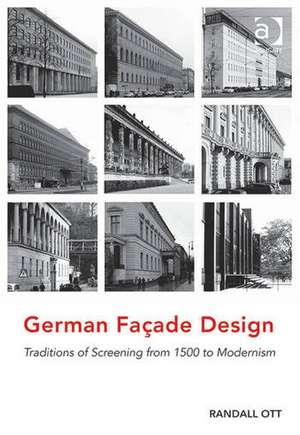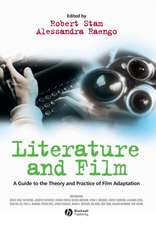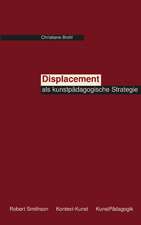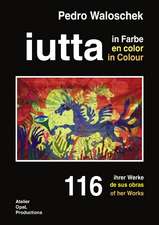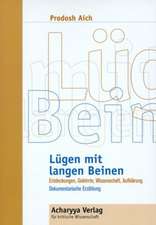German Façade Design: Traditions of Screening from 1500 to Modernism
Autor Randall Otten Limba Engleză Hardback – 6 ian 2016
It identifies and documents a previously unrecognized compositional tradition - characterized here as the 'screen façade' – and posits it as a counter-narrative critiquing the essentialist, 'authentic' canon currently dominant in Western architectural history. By crossing evenly over the dividing line between the historical and modern periods, it offers valuable insights on indigenous roots underlying some aspects of Germany's invigorating early twentieth-century architectural developments. The book chronologically examines 400 years of closely related facades, concentrated in Germany but also found in Austria, the Czech Republic, German-speaking Switzerland, and nearby areas of Central Europe. While nearly 75 buildings are mentioned and illustrated, a dozen are given extensive analysis and the book focuses on the works of three architects – Schinkel, Behrens and Mies. Relationships between examples of these three architects' façades far transcend mere homage amongst masters. Glimmers of the system they eventually codify are apparent as early as at Heidelberg Castle in 1559 and Nürnberg's Rathaus in 1622.
The book argues that in Germany, northern Gothic affinities for bisection, intense repetition and rote aggregation intersected with southern Classical affinities for symmetry, hierarchy and centrality, thereby spawning a unique hybrid product – the screen.
Instead of graphic formality, this study is guided by on-site perceptions, propositional contrasts, means of approach, interpretive conflicts and emotion and it relates the design of these façades to concepts proposed by contemporary philosophers including Novalis, Hegel, Nietzsche, Freud, Adorno, and, most importantly, Gadamer on hermeneutics.
| Toate formatele și edițiile | Preț | Express |
|---|---|---|
| Paperback (1) | 449.41 lei 43-57 zile | |
| Taylor & Francis – 12 oct 2017 | 449.41 lei 43-57 zile | |
| Hardback (1) | 834.17 lei 43-57 zile | |
| Taylor & Francis – 6 ian 2016 | 834.17 lei 43-57 zile |
Preț: 834.17 lei
Preț vechi: 1148.83 lei
-27% Nou
Puncte Express: 1251
Preț estimativ în valută:
159.62€ • 167.08$ • 132.85£
159.62€ • 167.08$ • 132.85£
Carte tipărită la comandă
Livrare economică 31 martie-14 aprilie
Preluare comenzi: 021 569.72.76
Specificații
ISBN-13: 9781472459053
ISBN-10: 1472459059
Pagini: 416
Dimensiuni: 174 x 246 mm
Greutate: 1.25 kg
Ediția:1
Editura: Taylor & Francis
Colecția Routledge
Locul publicării:Oxford, United Kingdom
ISBN-10: 1472459059
Pagini: 416
Dimensiuni: 174 x 246 mm
Greutate: 1.25 kg
Ediția:1
Editura: Taylor & Francis
Colecția Routledge
Locul publicării:Oxford, United Kingdom
Notă biografică
Randall Ott, AIA, is an architect and educator who since 2003 has served as Dean of the School of Architecture + Planning at The Catholic University of America, in Washington DC. He has written widely on Modernism in central and northern Europe, publishing book chapters, articles, book reviews and encyclopedia entries. Particular emphases have been on the work of Mies van der Rohe, Karl Friedrich Schinkel and Germany. He has also made more than 30 scholarly presentations and lectures in those areas of study. For many years he served on the Editorial Board of the Journal of Architectural Education, reviewing articles on those topics. His interests often undertake a juxtaposition of wider cultural manifestations with architecture, such as his chairing of the Association of Collegiate Schools of Architecture's 1997 international conference in Berlin, entitled Building as a Political Act. As an architect, for the past two decades he has been involved in theoretical studies of the design of sacral and honorific spaces. For his work with theoretical chapels, he has won three Faculty Design Awards from the Association of Collegiate Schools of Architecture.
Cuprins
List of Illustrations, List of Locations and Buildings, Acknowledgments, 1 Four Centuries of Faint Centers, 2 Hermeneutics and the Sixth Component, 3 Greek, Italian and Germanic Precursors, 4 Comprehensive Early Screens, 5 Schinkel and Berlin, 6 Caspar David Friedrich and the Faint Axis, 7 Screens of Southern and Western Germany and Vienna, 8 Peter Behrens, 9 Twentieth Century Screens, 10 Nazi Screens, 11 Mies van der Rohe and Crown Hall, 12 Conclusion, References, Index
Descriere
This book posits the 'screen façade' as a counter-narrative critiquing the essentialist, 'authentic' canon currently dominant in Western architectural history.
